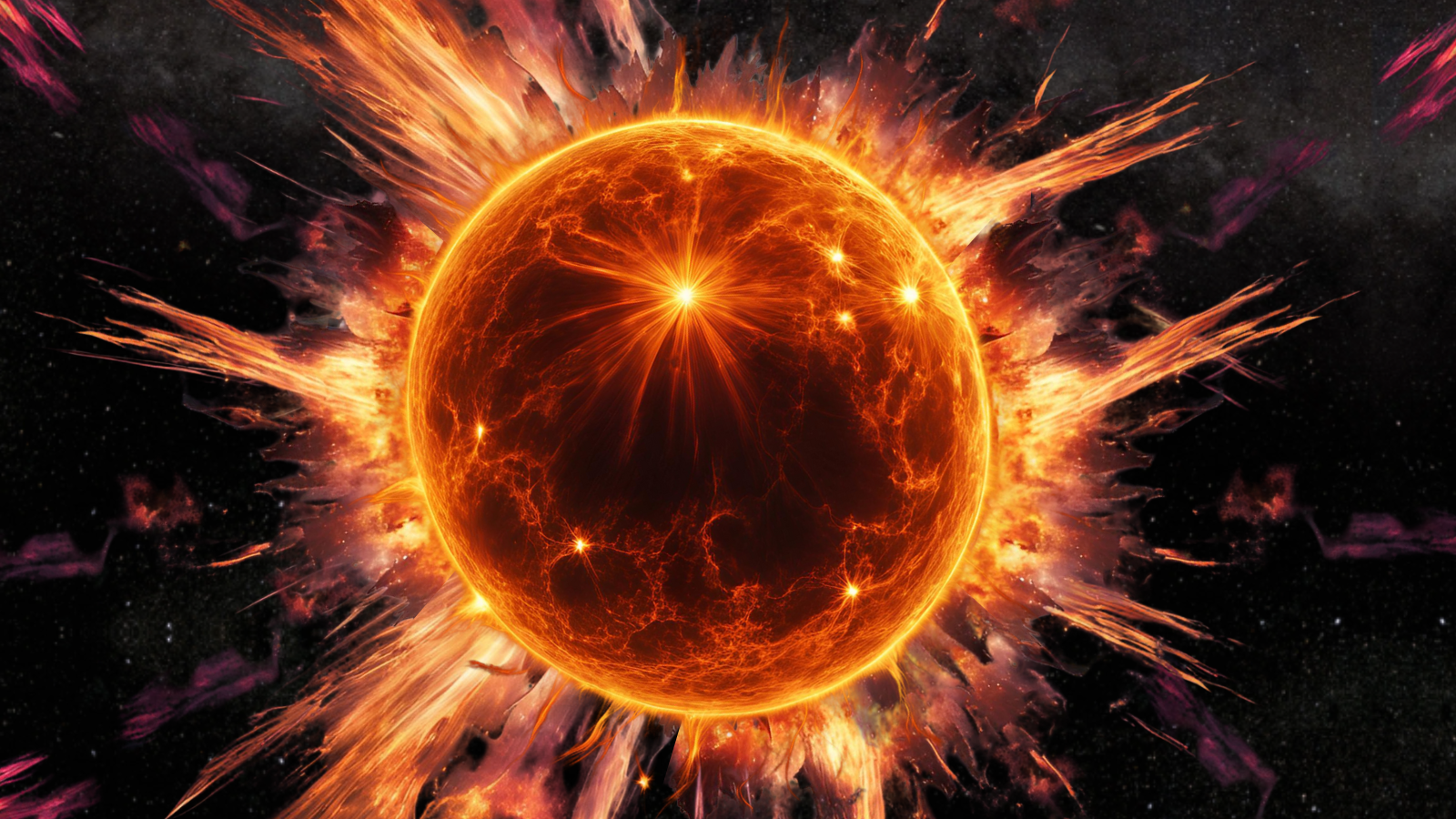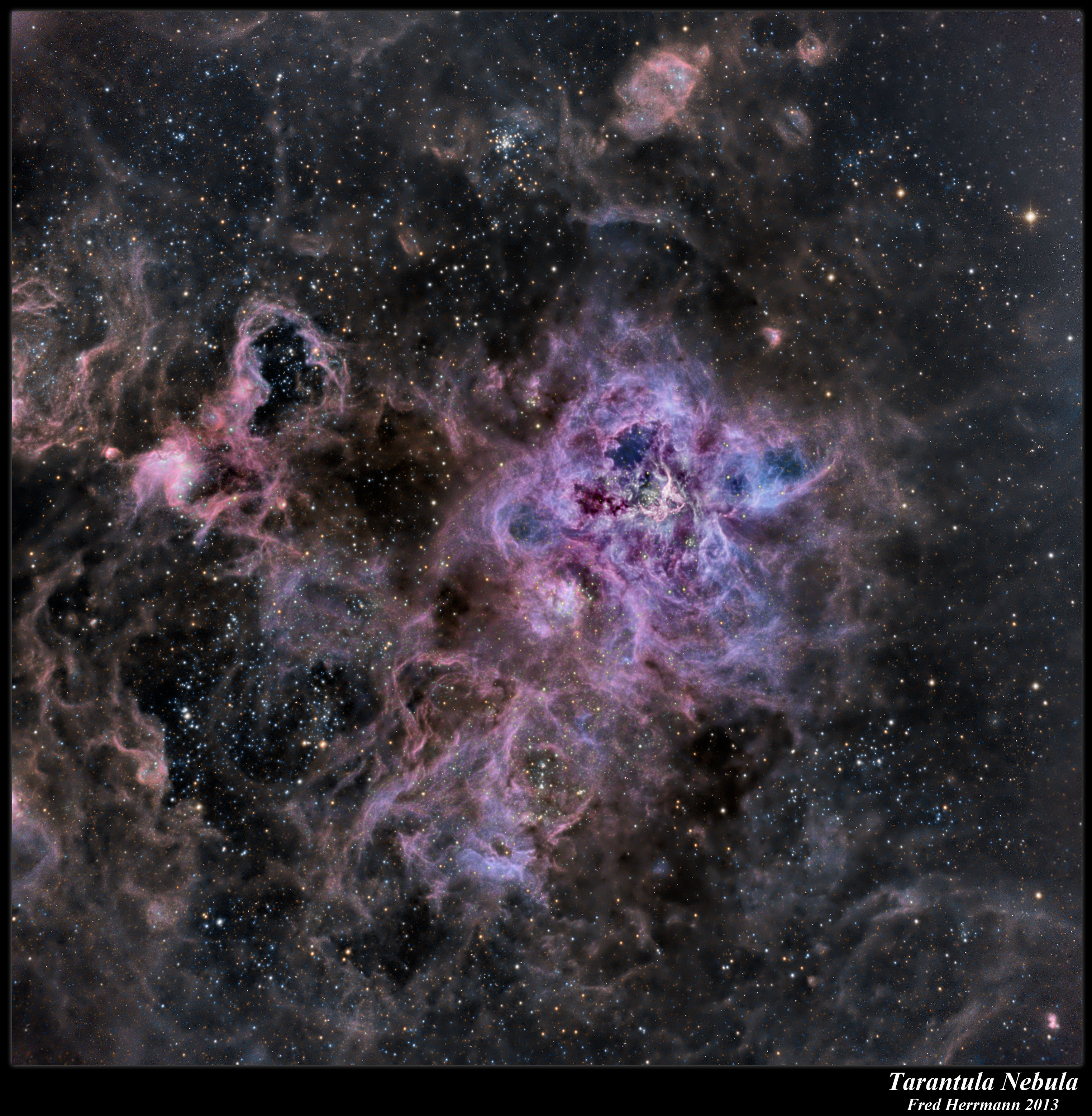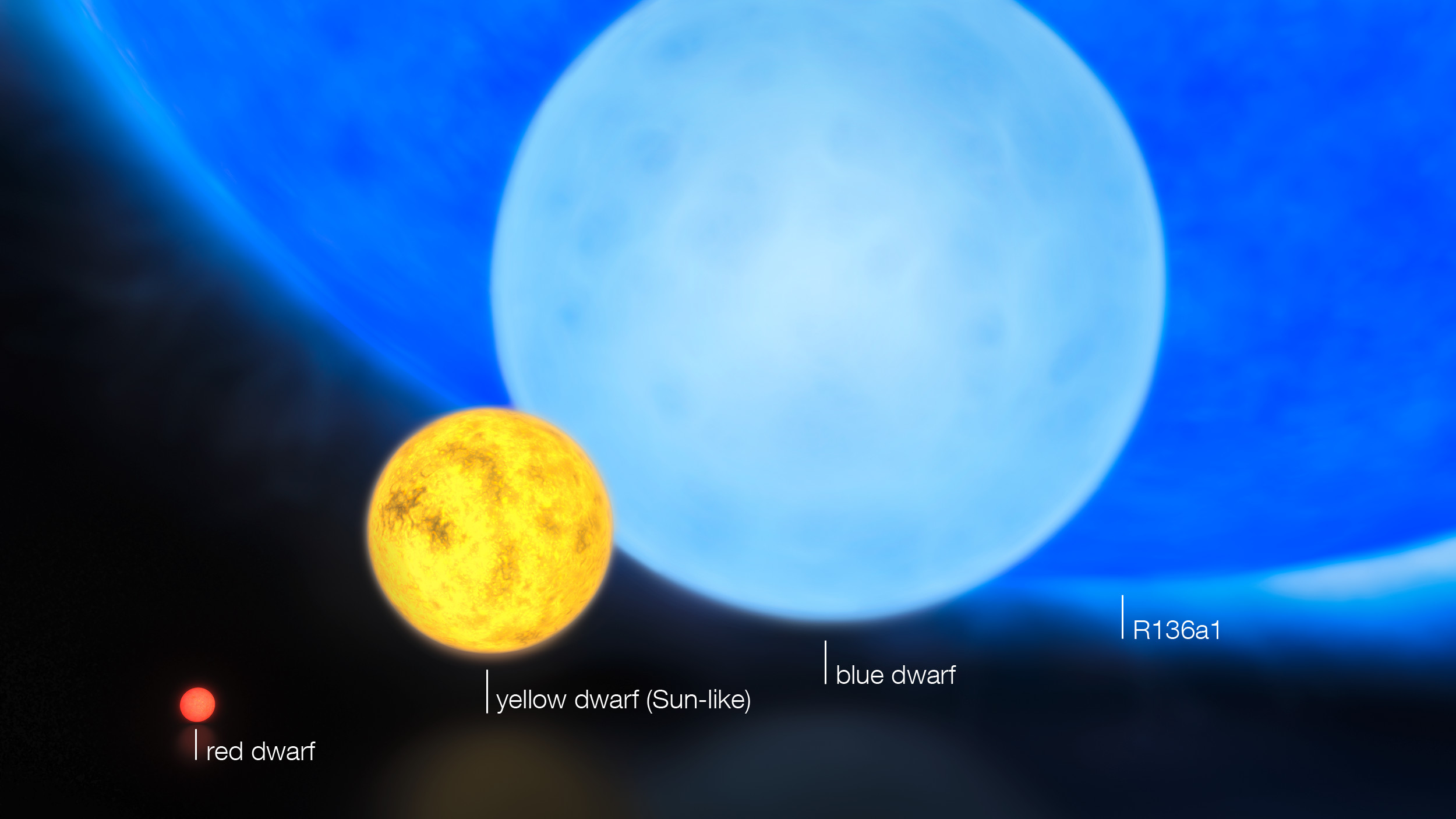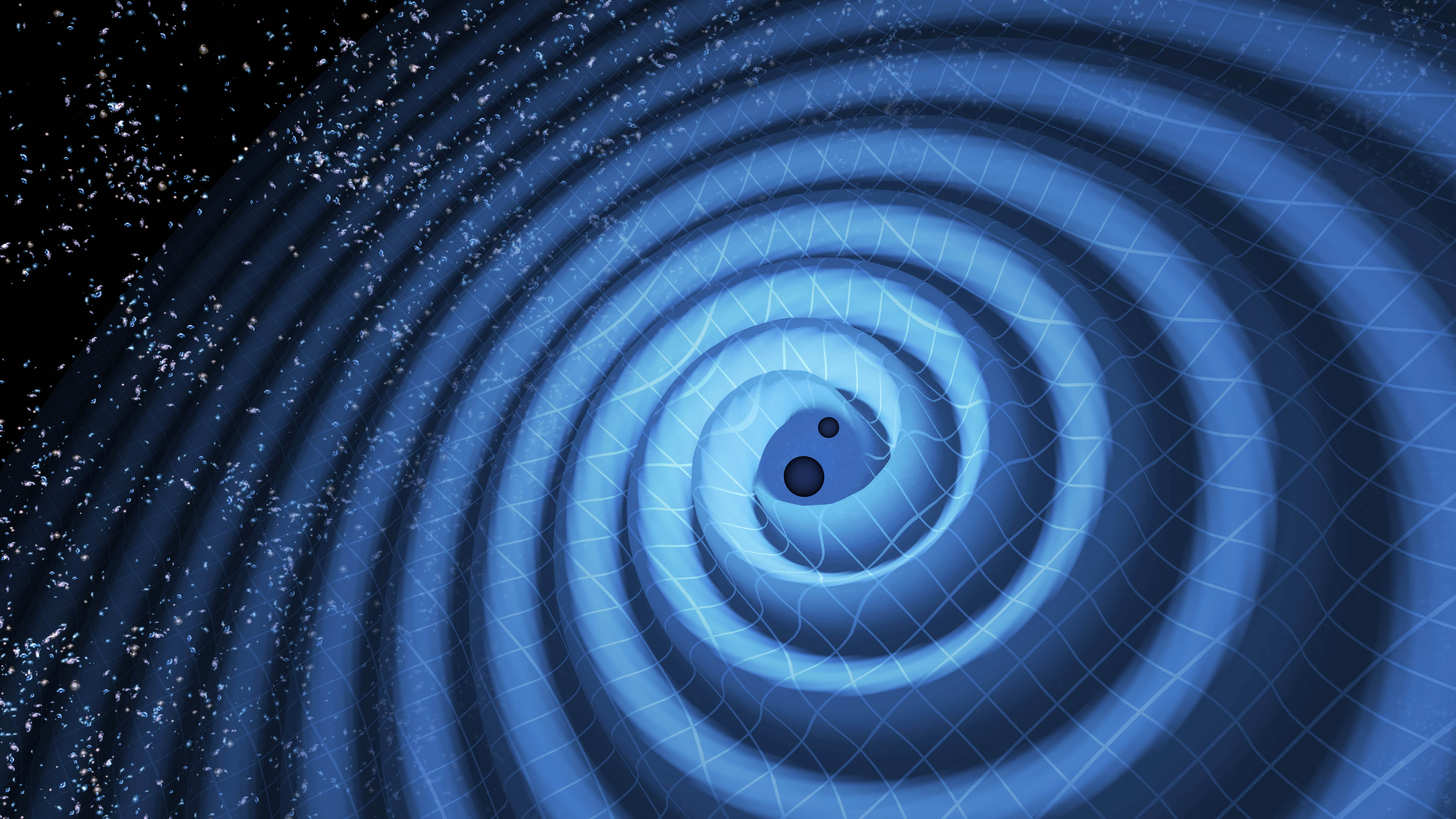
Very massive stars that collapse to create black holes may vomit out much more material during their short lives than we previously thought.
To fit with astronomical observations of these stars, which have masses over 100 times that of the sun, a team of scientists has estimated that very massive stars must have stellar winds far more powerful than has been estimated in the past. These winds should be powerful enough to blow the outer layers of these monstrous stars into space.
The team's modeling revealed how stellar binaries can lead to mergers between stars that forge single, very massive stars. They also explored how stronger stellar winds impact black hole populations, pointing away from the formation of elusive intermediate-mass black holes.
"Very massive stars are like the 'rock stars' of the universe — they are powerful, and they live fast and die young," team member Kendall Shepherd, a researcher at the Institute for Advanced Study in Italy (known by its Italian acronym, SISSA), told Space.com. "For these very massive stars, their stellar wind is more like a hurricane than a light breeze."
While our average-sized sun is expected to live for around 10 billion years, very massive stars burn through their nuclear fuel faster, living for just a few million years, or even a few hundred thousand years.
Studying such behemoths is important because they have a profound impact on their environments despite their short lives, Shepherd said.
"The strong winds of very massive stars and their eventual supernova explosions eject newly formed elements into the environment," she said. "Many of these elements form the basis of new stars, while others, like carbon and oxygen, are the building blocks of life.
"They are also the progenitors of black holes, including the black hole binaries that merge and produce gravitational waves that we detect on Earth."
The Rock Star mass-loss diet
In the new research, Shepherd and her colleagues analyzed theoretical and observational studies of very massive stars.
"Such massive stars are so incredibly rare, and so few observational constraints existed," Shepherd said. "With the help of space and ground-based telescopes, researchers were recently finally able to directly observe several stars in the Tarantula Nebula of the Large Magellanic Cloud with masses above 100 times our sun’s mass for the first time."
Those previous studies found that the most massive stars in the Tarantula Nebula are a rare hot and bright type of mostly stripped Wolf-Rayet stars (WNh stars) at the end of their hydrogen-burning phase, meaning they show leftover hydrogen on their surface.
"These stars were found to be very hot, around 72,540 to 90,000 degrees Fahrenheit (40,000 to 50,000 degrees Celsius). That's a little too hot! Standard models predict that, as the stars age, they should expand and cool down, in contrast to what the new observations showed," Shepherd said. "Researchers put the two pieces together and used the observed properties to calibrate a mass-loss 'recipe' to combine the theory and observation."

The team worked this recipe into their stellar evolution code, known as PARSEC (PAdova and tRieste Stellar Evolution Code), to create a new model accounting for the massive stars of the Tarantula Nebula.
"Our new models featuring stronger stellar winds are now able to match the observations and theory. The strong winds strip away the star’s outer layers, preventing it from cooling down, while maintaining the surface composition matching a WNh star," Shepherd explained. "The star stays more compact and hot for longer, exactly reproducing what observations show."

The team's research suggests there are two different routes that could have led to the birth of stars like the most massive star ever seen, R136a1. This star, also found in the Tarantula Nebula, has up to 230 times the mass of the sun and emits millions of times more energy than our star. It's also just 1.5 million years old, compared to the 4.6 billion-year-old sun.
The team's model suggests that R136a1 could have been born as a single, ginormous star, or it could have formed as a result of a dramatic stellar merger.
"I was surprised that our results give two distinct possible explanations for the origin of R136a1, the most massive star known. I was quite fascinated that a binary stellar merger — where two stars merge and become a single, more massive star — could provide a plausible origin," Shepherd said. "Even more interesting is the difference in the initial mass that is needed to reproduce R136a1 from the single-star and binary stellar merger scenarios."
The researcher added that, for a single-star origin to match the features of R136a1, the star would need an initial mass over 100 solar masses — larger than is needed for a binary stellar merger origin, regardless of the wind recipe used.
"This could suggest a revision to what we thought was the upper limit for how massive a star can be in the local universe," Shepherd said.
What direction does the wind blow for black holes?
Strong stellar winds and the rapid mass loss they cause also have strong implications for the masses of black holes that are created when massive stars collapse under their own gravity at the end of their lives.
"Because the stronger winds strip away so much of the star's mass, at the end of their lives they form smaller black holes," Shepherd said. "This study can shed a lot of light on predicting black hole masses. Stellar models that use the standard and weaker mass-loss recipes can produce intermediate-mass black holes."
These black holes, which are around 100 to 10,000 times more massive than the sun, have proved difficult for astronomers to find.
"By having the stars lose more mass via stronger winds, the simulations produce fewer of these uncertain objects, making our models more in line with what is found in nature!" Shepherd said.

The team also proposes that, contrary to current thinking, stronger stellar winds are needed if systems are to develop into black hole binaries with masses both greater than around 30 times that of the sun.
"Even more exciting is that, when we looked at the binary black holes that merge in our simulations, our new models with stronger winds were able to produce systems where the two black holes were both massive," Shepherd said. "This is exciting because this is a population that has been observed with gravitational wave detectors, but which previous models with standard winds struggled to produce."
The two black holes in these binaries emit tiny ripples in space called gravitational waves as they spiral together and eventually merge. But strong stellar winds may be key to allowing this situation to develop.
"With the weaker, standard winds, the two stars expand and are more likely to merge before becoming black holes," Shepherd explained. "In contrast, the stronger winds can push the two stars apart, allowing them to survive as a pair of black holes that can later spiral in and merge."
The new research was focused on one specific environment, in the Large Magellanic Cloud, which has its own unique chemical composition. Thus, Shepherd said, the next step for the team will be to try to explain a handful of peculiar observed stars.
"These results are not yet universal, and so the natural next step would be to extend this study to a range of different initial compositions, to model different environments across the universe," Shepherd concluded. "It would be very exciting to see how much the predicted black hole populations change with these differing initial compositions."
The team's research is available as a preprint on the research repository arXiv.







